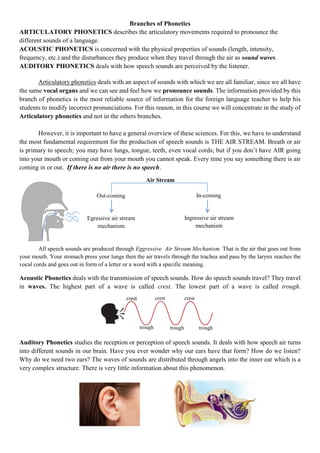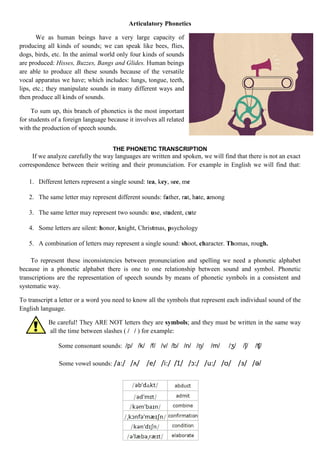This document discusses the study of phonetics and its branches. Phonetics is the study of the articulatory and acoustic properties of human speech sounds. It has three main branches: articulatory phonetics studies speech production; acoustic phonetics studies sound transmission; and auditory phonetics studies sound perception. The document focuses on articulatory phonetics as it provides the most reliable information for teaching pronunciation to foreign language learners. It describes the human vocal anatomy and how air is used to produce different speech sounds. Phonetic transcription uses symbols to represent sounds and their relationships to spelling, in order to accurately describe pronunciation.



